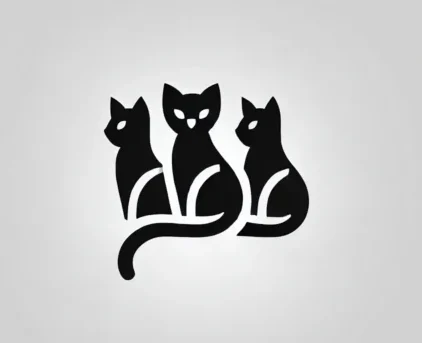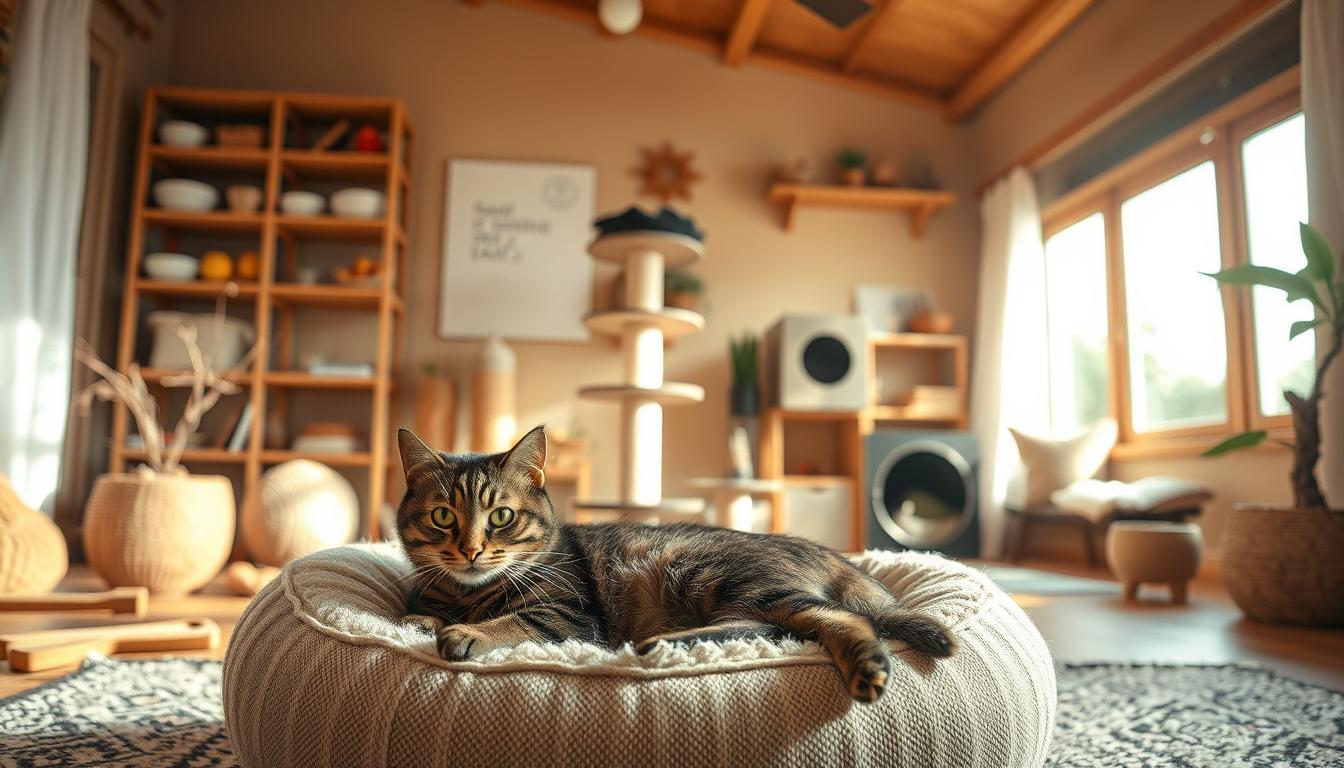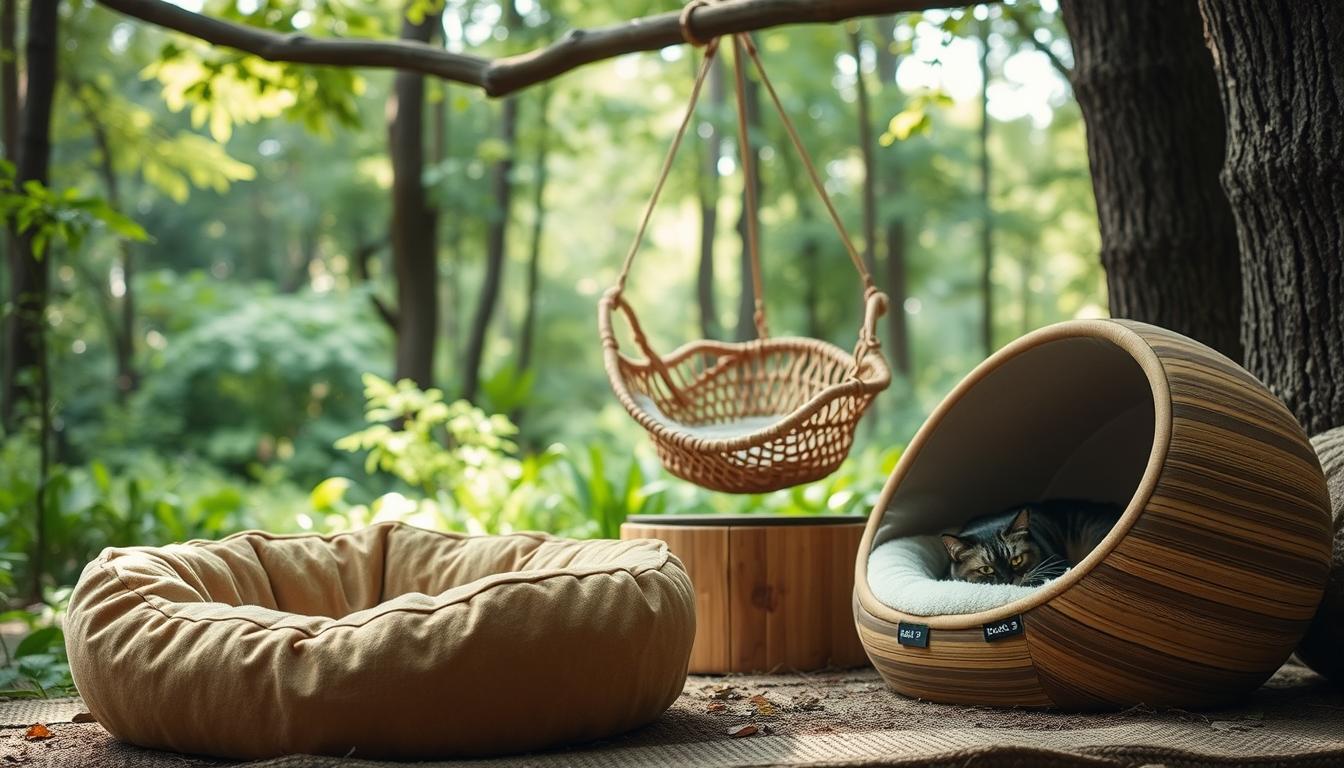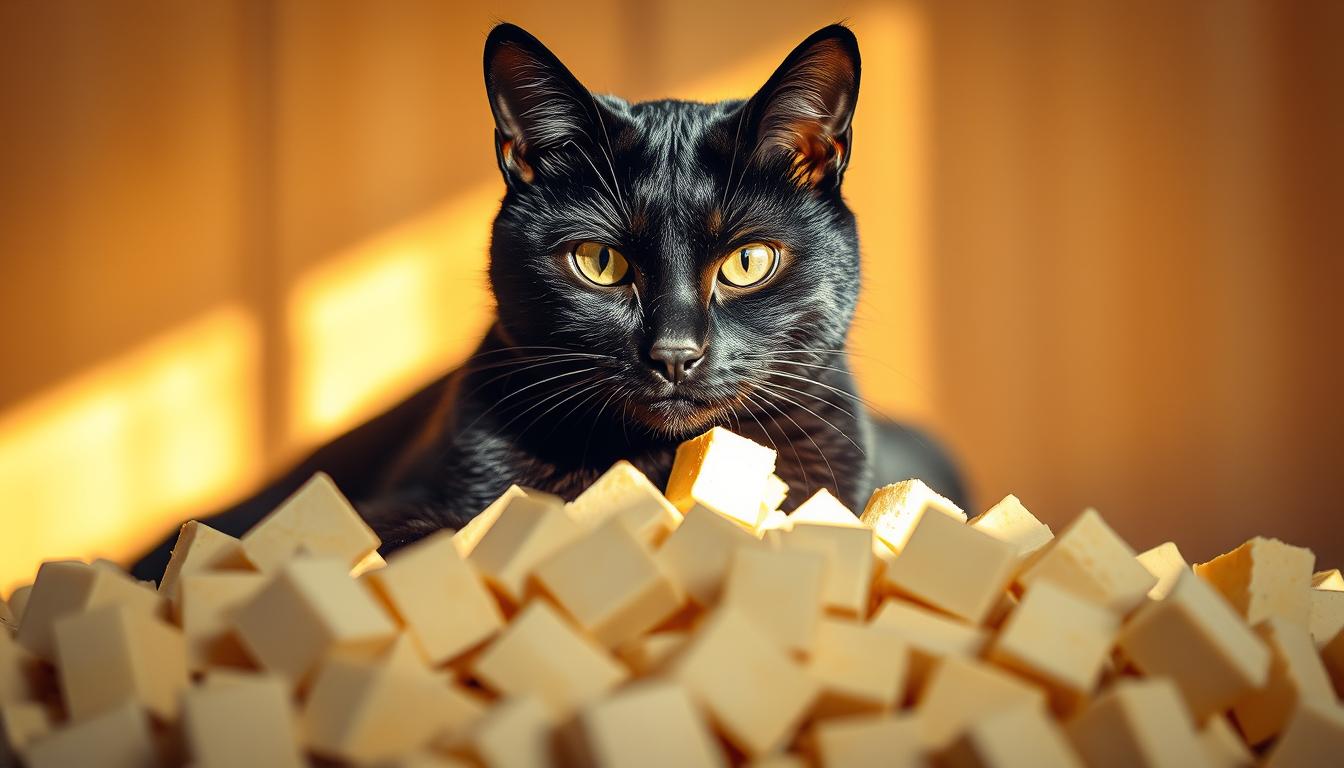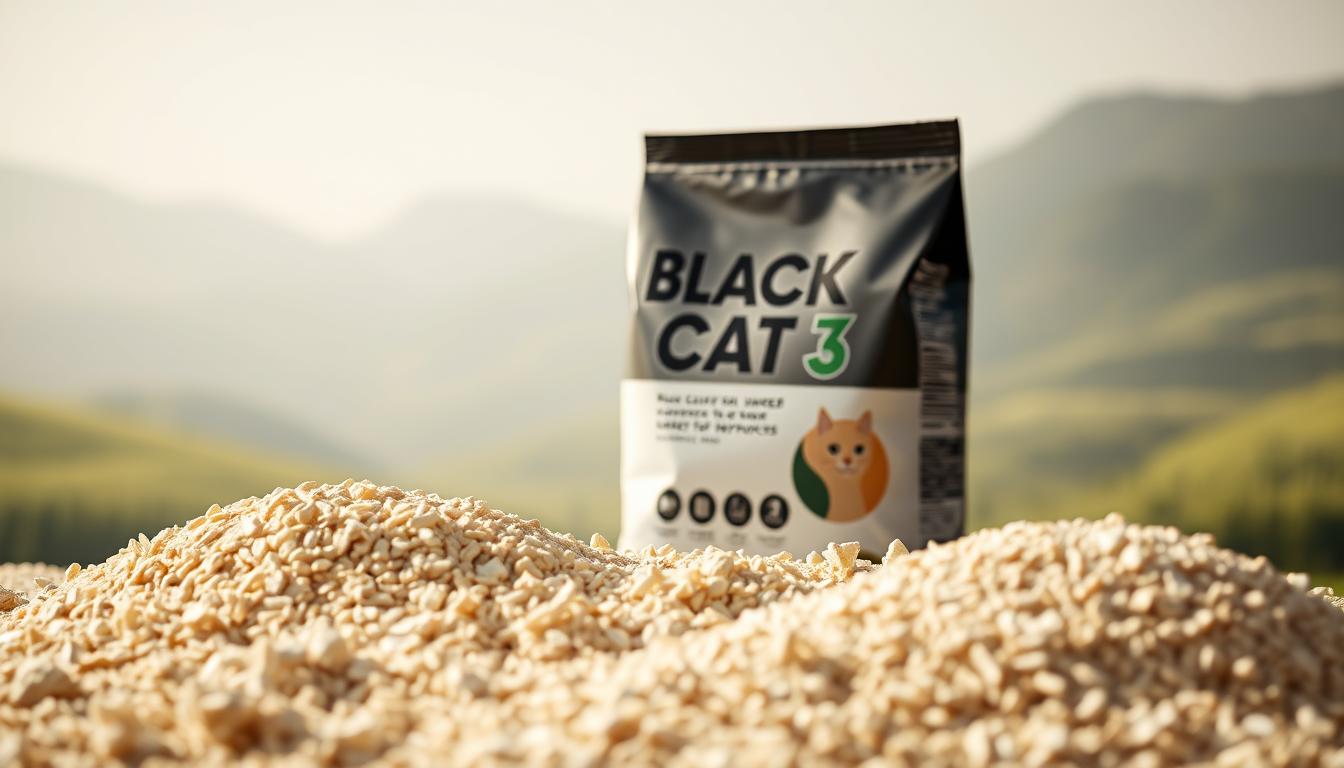Every morning, Sarah fills her furry friend’s bowl with fresh water. She smiles, remembering how her grandmother taught her to care for animals gently. Now she wonders: “Could those same loving habits help our forests and oceans too?”
Many families don’t realize how daily pet routines shape the world. Switching to reusable food containers instead of plastic bags creates less trash. Choosing toys made from recycled materials gives old items new life. These small acts add up like raindrops filling a river.
Healthy choices for pets often mean healthier choices for Earth. Natural fiber brushes clean soft fur without shedding microplastics. Bamboo litter scoops break down safely in soil instead of lingering in landfills. Even homemade treats using local ingredients reduce packaging waste.
This journey isn’t about being perfect—it’s about taking one step at a time. Whether using washable bedding or sharing supplies with neighbors, every action shows love. For our pets, our homes, and the whispering trees outside our windows.
Key Takeaways
- Reusable items reduce household trash from pet care routines
- Natural materials create safer environments for animals and ecosystems
- Homemade meals decrease plastic packaging waste
- Eco-friendly choices often benefit pet health and wellbeing
- Small daily changes create meaningful environmental impacts over time
Introduction to Greener Feline Living
Mr. Whiskers rubs against his owner’s leg, purring as sunlight spills through the window. His human, Mia, pauses while opening a new bag of kibble. “What happens to all these plastic bags when we’re done?” she wonders. Tiny choices like these shape our planet’s future.
Why Gentle Choices Matter
Traditional pet items often hide hidden costs. Plastic food pouches take 500+ years to break down, while chemical sprays can harm delicate paws and soil. Switching to shampoo bars made from oats keeps fur soft without polluting waterways. Biodegradable grooming tools return to earth like fallen leaves.
A Shift in Paw-renting Trends
Recent surveys show 63% of animal lovers now seek sustainable options.
“Our furry friends deserve clean air and safe grass to play in,”
shares a mother from Oregon. Families are embracing reusable food jars and plant-based litter—proving love for pets and nature can grow together.
Every eco-conscious decision creates ripples. Bamboo feeding bowls reduce deforestation. Donating unused supplies shelters other animals in need. Even baking treats at home cuts packaging waste while strengthening bonds. Small steps, when multiplied, become giant leaps for our shared world.
Zero waste cat care tips: Practical Strategies for Daily Routines
Lila watched her daughter Emma cradle their tabby, Snowball. “Let’s make something special for our furry friend,” she said, pulling out an old sweater. Together, they crafted a cozy bed—transforming forgotten fabric into a purring paradise.
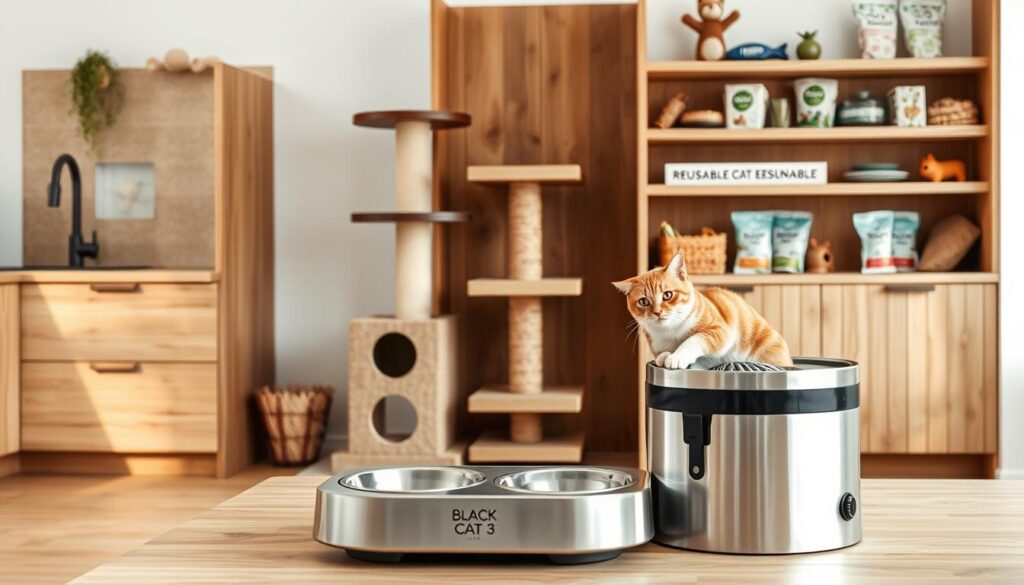
Reducing Plastic and Packaging Waste
Pet food pouches pile up quickly. TerraCycle’s free recycling program turns them into park benches. Store kibble in glass jars instead of single-use bags. One family saved 30 plastic containers yearly this way.
Implementing Sustainable Habits at Home
Try these swaps during weekend projects:
| Item | Traditional Choice | Eco-Friendly Swap |
|---|---|---|
| Food Storage | Disposable plastic bags | Stainless steel containers |
| Toys | Plastic mice with batteries | Felt balls stuffed with catnip |
| Waste Management | Single-use grocery bags | Litter Genie® reusable system |
Turn laundry days into crafting sessions. Old towels become scratching pads. Empty oatmeal containers transform into treat puzzles. “We call it treasure hunting for Earth,” laughs a dad from Michigan.
Even small changes matter. Use cloth wipes instead of disposable ones. Bake chicken bites using local ingredients. Share extra supplies through neighborhood groups. Every thoughtful choice whispers, “I care.”
Sustainable Cat Nutrition and Homemade Food Options
Eight-year-old Jake stirred a pot of simmering chicken while his mother chopped carrots. “This smells better than my lunch!” he giggled. Their kitchen adventure wasn’t for humans—they were crafting meals for their tabby, Mochi, using farmer’s market finds.
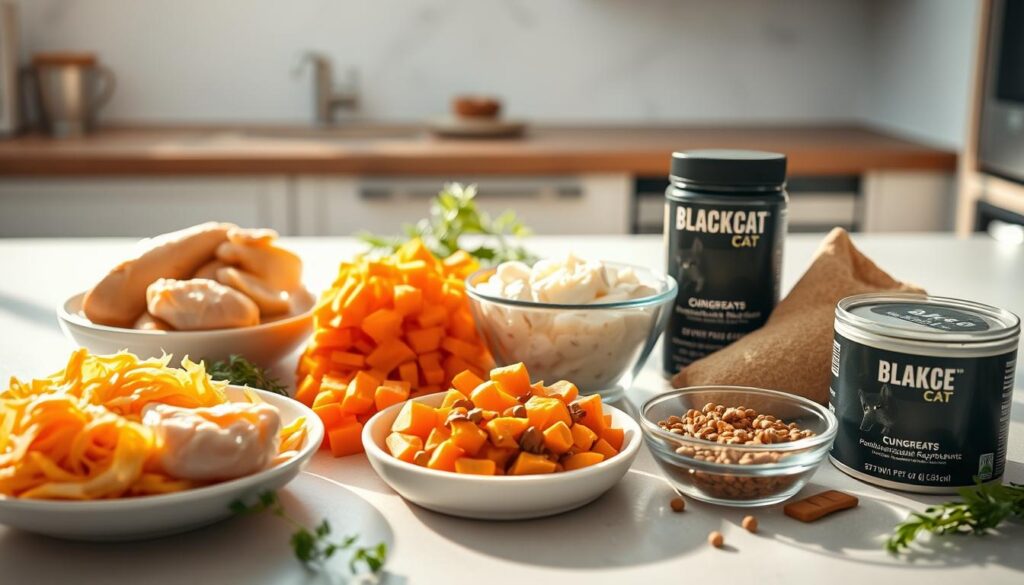
Benefits of a Homemade, Balanced Diet
Fresh meals let families control what goes into pet food. Store-bought options often contain preservatives, but cooked turkey with peas offers natural nutrients. A Maine family reported shinier fur and fewer vet visits after switching.
Preparing meals at home reduces plastic pouches and cans. One reused glass jar holds three servings, unlike single-use packets. “We save money and trash space,” shares a grandmother from Iowa.
Exploring Bulk and Local Sourcing
Stores like WinCo offer rice and oats in bulk bins. Buying larger quantities means less packaging. Local butchers often donate meat scraps perfect for cat food.
Try this simple recipe:
- Mix 1 cup cooked chicken with ¼ cup pumpkin
- Add fish oil for healthy skin
- Portion into reusable containers
Seasonal veggies from nearby farms provide variety. Rotating ingredients keeps meals exciting while supporting community growers. Every bite nourishes pets and the planet.
Eco-Friendly Litter and Responsible Waste Management
Benny carefully scooped clumps from his kitten’s tray, his nose wrinkling at the dusty cloud. “There must be a better way,” he thought, watching sunlight dance through the floating particles. Families across America are discovering cleaner solutions that protect both pets and planet.
Earth-Friendly Choices for Fluffy Friends
Traditional clay litter creates mining scars and doesn’t break down. Plant-based options like wheat or recycled paper dissolve like autumn leaves. A Colorado family reported fewer sneezes after switching to pine pellets—“Even Mittens seems happier!”
| Type | Traditional Clay | Eco-Friendly Option |
|---|---|---|
| Material | Strip-mined bentonite | Renewable corn or wood |
| Decomposition | 500+ years | 2-6 months |
| Dust Levels | High | Low |
Gentle Goodbyes to Pet Waste
Never flush used litter—it can harm water systems. Try these earth-kind methods instead:
- Bury waste in designated composting areas (away from edible plants)
- Use biodegradable bags in a Litter Genie® system
- Donate unused supplies to animal shelters
A Michigan teacher shares:
“We mix soiled pine pellets with yard trimmings—our roses have never been brighter!”
Chooselitter boxesmade from recycled plastic. Look for brands like Ökocat that plant trees with every purchase. Small changes create big paw prints!
DIY Cat Toys and Eco Accessories
Sophie giggled as her father showed her how to braid strips of an old flannel shirt. “Watch this become Mittens’ new favorite toy,” he whispered, tying knots into a colorful rope. Families are discovering joy in crafting pet treasures from household leftovers.
Easy DIY Projects for Cat Toys
Transform common items into exciting toys:
- Wrap crinkled paper around a bottle cap for a noisy ball
- Dangle feathers from a wooden spoon using yarn scraps
- Stuff organic catnip into sock remnants for chewable mice
A Minnesota mom shares:
“Our ragdoll chases cardboard rolls like they’re gold!”
Upcycled Ideas for Cat Beds and Scratching Posts
Turn forgotten objects into cozy havens. An old sweater becomes a plush bed when stuffed with fabric scraps. Bookshelves destined for landfills make perfect climbing towers.
| Project | Traditional Materials | Eco-Friendly Swap |
|---|---|---|
| Scratching Post | New carpet samples | Jute rope wrapped around chair legs |
| Interactive Toy | Plastic puzzle feeders | Egg carton with hidden treats |
| Sleeping Nook | Polyester-filled pillow | Mismatched towels folded in a basket |
DIY creations reduce plastic use while sparking creativity. “We host monthly craft nights with neighbors,” says a Vermont teacher. Natural materials like untreated wood and organic cotton keep pets safe during play.
Promoting Responsible Pet Ownership: Spaying, Neutering & Adoption
The Johnson family stood before rows of hopeful eyes at the local animal shelter. “Each furry friend here needs a home,” the volunteer explained softly. Their decision that day would shape lives beyond their new companion.
The Environmental Impact of Spaying and Neutering
One unspayed cat can lead to 12,000 descendants in five years. Overcrowded shelters strain resources, while stray animals disrupt local ecosystems. Spaying prevents this chain reaction, protecting birds and small wildlife.
Veterinarian Dr. Patel shares:
“Neutering reduces territorial behaviors—fewer fights mean less strain on animal hospitals. It’s kindness multiplied.”
| Spayed/Neutered | Not Altered | |
|---|---|---|
| Lifespan | 13-17 years | 2-5 years |
| Offspring Potential | 0 | 12,000+ in 5 years |
| Health Risks | Reduced cancers | Higher disease rates |
Why Adopting Your Feline Friend Matters
Shelters nationwide house 3.2 million cats yearly. Choosing adoption:
- Saves lives directly
- Reduces demand for breeding facilities
- Gives older animals a second chance
Nine-year-old Mia found her striped companion Whiskers at a rescue event. “He teaches me about loyalty every day,” she says. Open-admission shelters provide medical care, ensuring each pet finds safety.
Every adoption creates space for another animal in need. It’s a circle of compassion—helping paws reach across neighborhoods and forests alike.
Conclusion
In the quiet of twilight, a father and daughter stroll past their neighbor’s blooming garden. “See how Mrs. Lee grows flowers where her compost bin sits?” he whispers. Their own journey toward greener habits with their tabby began with similar small steps—a reused jar here, a homemade toy there.
Every choice matters. Storing kibble in bulk containers reduces plastic. Choosing plant-based litter protects waterways. Crafting toys from old sweaters sparks joy without waste. These options create healthier homes for pets and people alike.
Families can start today. Swap one disposable item for a reusable alternative. Share extra supplies through community groups. Explore resources like library books on sustainable pet care. “We’re learning together,” says a mom from Texas, her cat batting a sock stuffed with organic herbs.
Hope grows with each action. When neighbors exchange ideas or schools host eco-craft days, life improves for all creatures. Keep discovering new ways to nurture furry friends and forests. Share stories, try fresh things, and watch love for pets blossom into care for our shared world.
